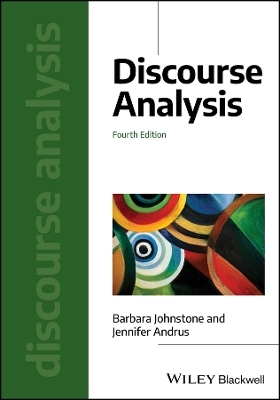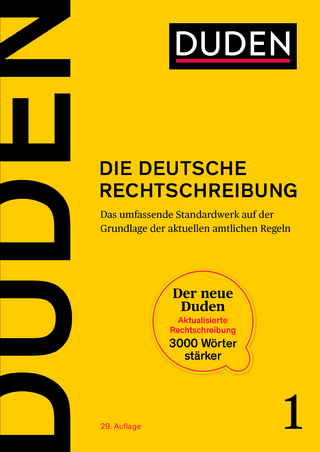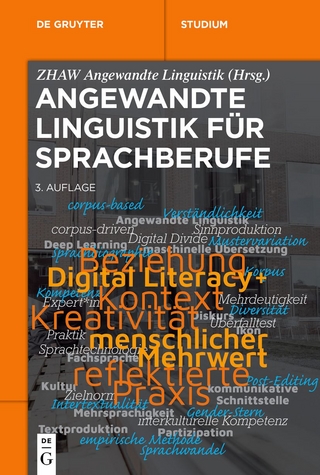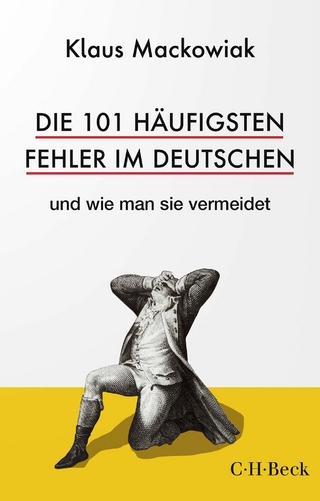
Discourse Analysis
Wiley-Blackwell (Verlag)
978-1-394-18516-0 (ISBN)
Discourse Analysis explains how to collect and analyze spoken, written, and multimodal language. Now in its fourth edition, this popular textbook encourages students to think systematically and critically about different sources of discourse to better understand why spoken utterances and written texts have the meanings and uses they do. Throughout the book, the authors offer real-life examples of what discourse analysis can reveal about language, individuals, groups, and society.
Student-friendly chapters describe discourse analysis with a goal of helping students master the fundamental concepts of this important area of linguistic research. Each chapter contains discussion questions that encourage students to relate the material to their own experiences, perform their own analyses, and consider important issues in research design and research ethics. The new edition of Discourse Analysis includes new discussion questions and ideas for research projects, up-to-date supplementary readings, and expanded discussions of corpus analysis methods, rhetorical legitimation, and social identities. This textbook:
Teaches students to apply discourse analysis to answer research questions in disciplines across the humanities and social sciences
Explains the complex relationships between discourse and various aspects of context, such as linguistic structure, participants, and prior discourse
Provides instructors with the flexibility to re-order chapters to meet the needs of their students
Features exercises that incorporate extensive data from a variety of languages and situations, including discourse in electronic media
Contains discussion questions, activities, research projects suggestions, further readings, chapter summaries, and other pedagogical features
Discourse Analysis, Fourth Edition, remains the ideal primary text for undergraduate and graduate courses in language and linguistics, language pedagogy, rhetoric and composition, and linguistic ethnography.
BARBARA JOHNSTONE is Professor Emeritus of Rhetoric and Linguistics at Carnegie Mellon University. Her research is at the intersection of rhetoric, linguistics, and critical theory. She is interested in how the relationships between individuals and communities are created and maintained through discourse. JENNIFER ANDRUS is Professor of Writing and Rhetoric Studies at the University of Utah, where she teaches courses on discourse analysis, legal rhetoric, and rhetorical theory. She is a founding board member of Fight Against Domestic Violence and the author of numerous articles and two books.
List of Figures xi
List of Tables xii
Preface xiii
1 Introduction 1
1.1 What Is Discourse Analysis? 1
1.1.1 “Discourse” 2
1.1.2 “Analysis” 3
1.2 Some Uses of Discourse Analysis 5
1.2.1 Discourse Analysis in Linguistic Research 5
1.2.2 Discourse Analysis in Other Disciplines 6
1.2.3 From Text Outward 6
1.3 Facets of Discourse Analysis 7
1.3.1 A Heuristic for Analysis 8
1.3.2 Texts and Interpretations of Texts are Shaped by the World, and They Shape the World 9
1.3.3 Discourse Is Shaped by Purpose and Discourse Shapes Possible Purposes 11
1.3.4 Discourse Is Shaped by the Possibilities and Limitations of Language, and Discourse Shapes Language 12
1.3.5 Discourse Is Shaped by Interpersonal Relations, and Discourse Helps to Shape Interpersonal Relations 14
1.3.6 Discourse Is Shaped by Expectations Created by Familiar Discourse, and New Instances of Discourse Help to Shape Our Expectations about What Future Discourse Will Be Like and How It Should Be Interpreted 15
1.3.7 Discourse Is Shaped by the Limitations and Possibilities of Its Media, and the Possibilities of Communications Media are Shaped by Their Uses in Discourse 16
1.4 Texts, Transcripts, and Corpora: Data for Discourse Analysis 17
1.4.1 Corpus Analysis 19
1.4.2 Transcription: Representing Speech in Writing 19
1.4.3 “Descriptive” and “Critical” Goals 24
1.5 Locations of Meaning 26
1.6 Discourse as Strategy, Discourse as Adaptation 28
1.7 Language and Languaging 30
1.8 Particularity, Theory, and Method 31
1.9 Chapter Summary 33
Further Reading 34
2 Discourse and World 35
2.1 Introduction 35
2.2 Linguistic Categories and Worldviews 38
2.3 Discourse, Culture, and Ideology 44
2.3.1 Metaphor and Conceptual Frames 46
2.3.2 Poetics, Grammar, and Culture: Parallelism and Text Metricality 49
2.3.3 Critical Discourse Analysis 53
2.3.3.1 Representing Actions, Actors, and Events 54
2.3.3.2 Evaluating: Affect, Judgment, Appreciation, Graduation 56
2.3.3.3 Representing Knowledge Status: Evidentiality 57
2.3.3.4 Naming and Wording 59
2.3.3.5 Representing Other Voices: Heteroglossia and Appropriation 60
2.3.3.6 Collocation and Semantic Preference: Cumulative Effects of Text-level Choices 62
2.3.4 Legitimation and Truth 67
2.4 Language Ideology 71
2.5 Silence 74
2.6 Chapter Summary 77
Further Reading 78
3 Intention and Interpretation 80
3.1 Introduction 80
3.2 Speech Acts, Conversational Implicature, and Relevance Theory 81
3.3 Contextualization Cues and Discourse Marking 87
3.4 Rhetorical Aims, Strategies, and Styles 93
3.5 Verbal Art and Performance 102
3.6 Chapter Summary 105
Further Reading 105
4 Discourse Structure: Parts and Sequences 107
4.1 Introduction 107
4.2 Words and Lines 109
4.3 Old and New Information and the Organization of Sentences 115
4.4 Cohesion 119
4.5 Paragraphs and Episodes 125
4.6 Discourse Schemata and the Structure of Narrative 127
4.7 The Emergent Organization of Conversation 136
4.8 Structures and Rules 145
4.9 Chapter Summary 147
Further Reading 148
5 Participants in Discourse: Relationships, Roles, Identities 149
5.1 Introduction 149
5.2 Audience, Politeness, and Accommodation 150
5.3 Power and Solidarity 155
5.4 Indexicality 160
5.5 Social Roles and Participant Frameworks 162
5.6 Performances of Identity 167
5.6.1 Gender and Sexual Identity in Discourse 169
5.6.2 Race and Racialization in Discourse 170
5.6.3 Performing Place Identity 170
5.7 Stance and Style 172
5.8 Personal Identity: Discourse and the Self 179
5.9 The Linguistic Individual in Discourse 181
5.10 Chapter Summary 183
Further Reading 184
6 Prior Texts, Prior Discourses 186
6.1 Introduction 186
6.2 Intertextuality and Interdiscursivity 187
6.3 Repetition in Conversation 194
6.4 Situational Registers 199
6.5 Enregisterment 204
6.6 Genre: Recurrent Forms in Recurrent Actions 205
6.7 Frames, Plots, and Coherence 210
6.8 Chapter Summary 213
Further Reading 215
7 Discourse and Medium 216
7.1 Introduction 216
7.2 Writing and Speaking 217
7.2.1 Early Research About “Orality and Literacy” 217
7.2.2 Literacy and Literacies 221
7.3 Mediation: Communication and Technology 226
7.3.1 Medium and Discourse Form 229
7.3.2 Medium and Discourse Processing: Fixity, Fluidity, And Coherence 233
7.3.3 Medium and Interpersonal Relations 237
7.3.4 Medium, Expertise, and Knowledge-making 240
7.4 Analyzing Multimodal Discourse 242
7.4.1 Speech and the Body 242
7.4.2 Writing and Seeing 247
7.4.2.1 What Writing Looks Like 248
7.4.2.2 Reading Images 250
7.4.2.3 Words and Images 255
7.5 Chapter Summary 259
Further Reading 260
Glossary 261
References 267
Index 295
| Erscheinungsdatum | 17.02.2024 |
|---|---|
| Reihe/Serie | Introducing Linguistics |
| Sprache | englisch |
| Maße | 175 x 249 mm |
| Gewicht | 544 g |
| Themenwelt | Geisteswissenschaften ► Sprach- / Literaturwissenschaft ► Sprachwissenschaft |
| ISBN-10 | 1-394-18516-2 / 1394185162 |
| ISBN-13 | 978-1-394-18516-0 / 9781394185160 |
| Zustand | Neuware |
| Informationen gemäß Produktsicherheitsverordnung (GPSR) | |
| Haben Sie eine Frage zum Produkt? |
aus dem Bereich


